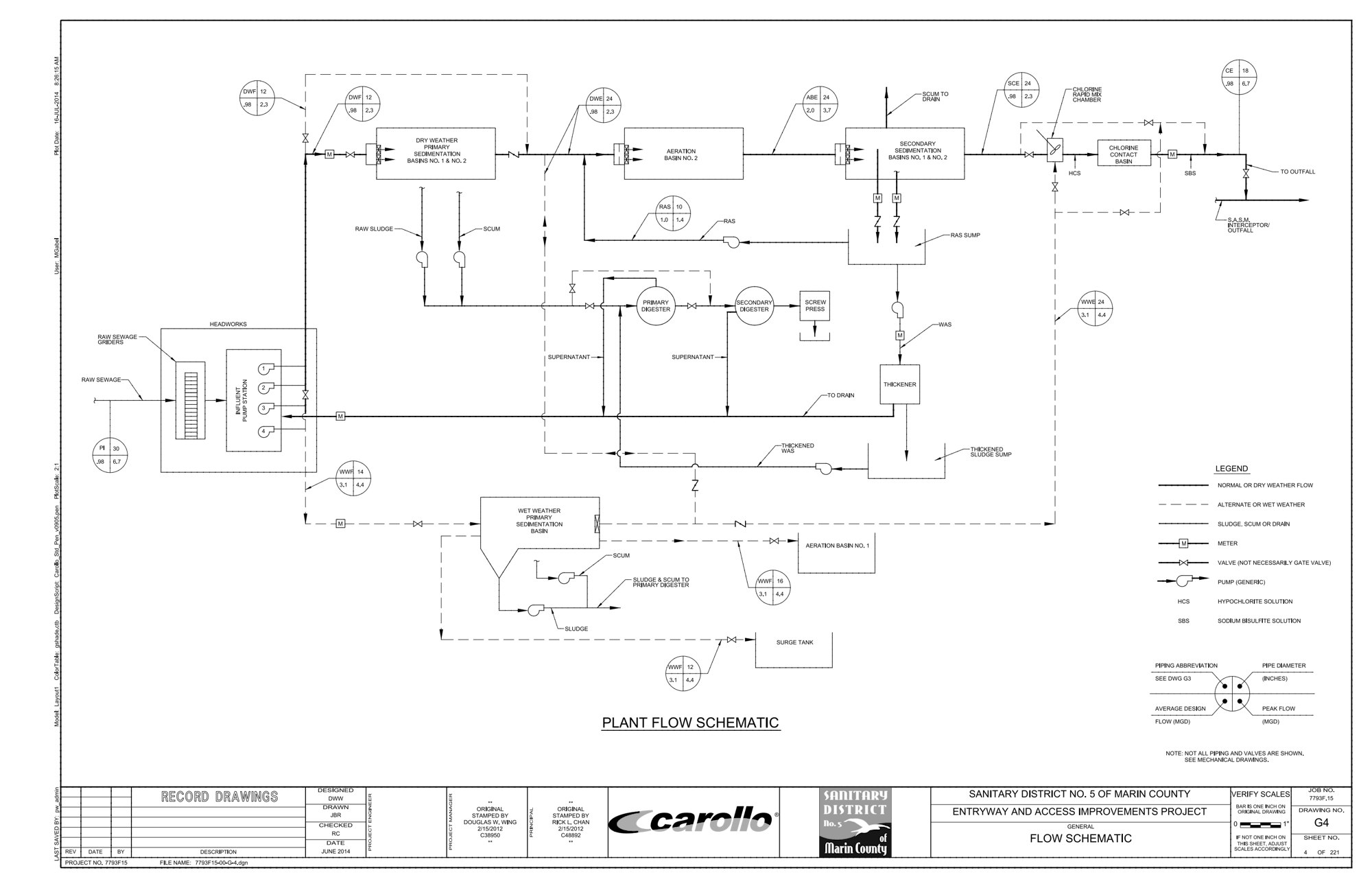Tiburon - Belvedere Wastewater Treatment Plant
Tiburon Main WWTP

Sanitary District No. 5 of Marin County (Discharger) owns and operates theTiburon Main Wastewater Treatment Plant and its collection system (collectively, the Facility). The Facility provides secondary treatment of wastewater for discharge to Raccoon Strait in Central San Francisco Bay.
Location and Service Area
The wastewater treatment plant is located at 2001 Paradise Drive in Tiburon. It provides secondary treatment of domestic and commercial wastewater for the City of Belvedere, the Town of Tiburon, and unincorporated areas of the Tiburon Peninsula. The Facility serves a population of about 8,400.
Collection System
The wastewater treatment plant receives flows from the City of Belvedere, the Town of Tiburon, and unincorporated areas of the Tiburon Peninsula, all of which are under the Discharger’s jurisdiction, totaling approximately 31 miles of collection system and 22 pump stations (13 in the City of Belvedere and 9 in the Town of Tiburon).
The District has developed and implemented a Sewer System Management Plan (SSMP) The SSMP documents the Districts program to properly operate and maintain its sanitary sewer system. The SSMP addresses the following elements.
- Goal
- Organization
- Legal Authority
- Operation and Maintenance Program
- Design and Performance Revisions
- Overflow Emergency Response Plan
- Fats, Oil, and Grease (FOG) Control Program
- System Evaluation and Capacity Assurance Plan
- Monitoring, Measurement, and Program Modifications
- SSMP Program Audits
- Communication Program
For detailed information please click on the dowloadable SSMP pdf. below
2018 05 16 F Main Plant SSMP 05042018TR.pdf
Wastewater Treatment
The plant can provide biological treatment for an average daily dry weather design flow of 0.98 million gallons per day (MGD). In the 2017 dry season (May 1 to October 31), the plant treated an average daily dry weather flow of 0.55 MGD. The treatment process consists of raw influent grinding, primary clarification, activated sludge aeration, secondary clarification, sodium hypochlorite disinfection, and sodium bisulfite dechlorination. The plant also has onsite storage consisting of an additional primary clarifier, an offline aeration basin, and a surge tank, totaling 315,000 gallons.

The plant can also provide biological treatment for up to 2.3 MGD during wet weather when influent flows to the plant are more diluted. During wet weather, when primary‑treated flows exceed the plant’s biological treatment capacity of 2.3 MGD and all onsite storage is used, the plant routes the portion of flows above 2.3 MGD from its primary clarifiers directly to its sodium hypochlorite disinfection tank (bypassing activated sludge aeration and secondary clarification) where it is blended with biologically treated effluent prior to discharge. Any primary treated flows stored onsite are routed back to the headworks for full treatment. Such bypasses, or blending, is necessary at times to prevent washout of microbial populations in the biological treatment units.
Sludge and Bio-Solids Management
The WWTP treats sludge with mesophilic anaerobic digesters (producing Class B biosolids), thickens the treated biosolids with a rotary drum, and dewaters the thickened sludge using a screw press. The District hauls the dewatered, treated biosolids to Redwood landfill to be used as daily cover or compost and also to the Lystek Fairfield, CA - Lystek facility in Fairfield CA where the Class B Bio-solids are further processed to a USEPA class A standard and beneficially reused as a soil amendment/fertilizer.
Discharge Point and Recieving Waters
The Discharger shares an outfall with the Sewerage Agency of Southern Marin Wastewater Treatment Plant in Mill Valley (regulated under NPDES Permit No. CA0037711). Discharge of treated effluent to Raccoon Strait in Central San Francisco Bay is through a 36-inch outfall and a submerged, multi-port diffuser (Discharge Point No. 001) located about 840 feet offshore. The diffuser spans 195 feet and consists of 15 risers, each with four 3-inch diameter ports submerged approximately 84 feet below mean sea level. The average daily outfall capacity is 31.4 MGD.
NPDES Permits
Tiburon Main WWTP Permit
Order R2-2023-0018.pdfNutrient Order
Nutrients Order R2-2024-0013.pdfMercury & PCB Order
R2-2022-0038.pdfCollection System Waste Discharge Requirements (WDR)
ORDER WQ 2022-0103-DWQ Statewide Waste DIscharge Requirements.pdf
